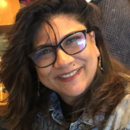Online Therapy for Schools Removes Barriers for Struggling Students
Texas Child Health Access Through Telemedicine is an example of a virtual therapy and psychiatry resource that many schools use to expand what they can offer students and make help more accessible.
The program is offered in most counties in Texas and is facilitated by the state’s university system. TCHATT relies on short-term psychiatry or therapy, then refers the child to a local community resource for continued support. These local connections can include nearby therapists or a community center.
The ability to refer students to a psychiatrist has been a helpful connection for Avantsa’s team, as well as for the families that might not have the insurance or financial ability to get their children that level of support. Kids can also have sessions from home, so parents don’t have to miss work.
“Before COVID-19, 3 to 5 percent of the student population needed intensive, individual support, but post-COVID, it’s gotten higher than that,” she says. “We never prescribe medication because we’re educators, but if we’re concerned that a student might need to consult with a psychiatrist, we can refer them to TCHATT.”
Avantsa’s team has found success using TCHATT with high schoolers. Though the program does work with younger children, it can be difficult to keep their attention focused on a screen for an extended period. High schoolers are able to leave class, find a safe spot in the counselor’s office, sign in to the session on a personal device, and remain engaged and focused throughout.
The accessibility is a major draw for the schools that use TCHATT or other virtual options for therapy.
“It’s accessibility more than anything else, and because it’s short-term, TCHATT can see more kids. They are meeting more needs,” says Avantsa, whose team covers 83 schools.
Given the sheer volume of students, language barriers can be a problem for therapists and social workers, Avantsa says. Her team relies on Google Translate for quick help (not for conducting sessions) when a parent doesn’t speak English. Families in her district speak over 100 languages and dialects.












